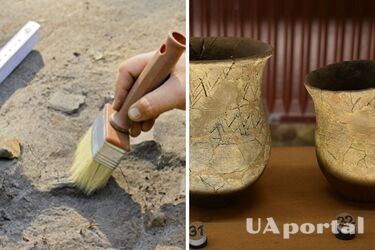Burial site of Unetice ulture dating back to 2200 BC discovered in Czech Republic

During the preparation for the construction of the new D35 motorway between the Czech villages of Sadová and Gorzyce, archaeologists discovered interesting finds dating back to the Unetice culture. The area under study is 10.5 km long. The researchers note that the area between the villages of Sadová and Gorzyce has been little explored, and no significant archaeological discoveries have been made here before.
This was reported by Radio Prague.
So far, the most significant sites discovered during archaeological excavations include a Bronze Age burial ground between the villages of Klenice and Horní Černůtky. The skeletal remains of a cow with its head severed and in its stomach are among the interesting finds related to modern history (XVIII-XX centuries). Archaeologists are still unable to explain this phenomenon.
The area between Sadova and the village of Klenice is particularly interesting from an archaeological point of view. There is a burial site of the Early Bronze Age, which belongs to the ancient period of the Unetice culture and dates back to approximately 2200-2150 BC.
Read also: Archaeologists found a 2300-year-old statue of a goddess in Turkey (photo)
Due to the acidity of the soil, the skeletal remains have hardly been preserved here, but archaeologists have collected a large number of pottery vessels that are typical of the Unetice culture.
The Unetice culture is an archaeological phenomenon of the Early Bronze Age spread over a large area of Central Europe. The name comes from the Unetice cemetery located near Prague and discovered in 1880.
As a reminder, Gothic graves with 2000-year-old treasures were unearthed in Poland.
If you want to get the latest news about the war and events in Ukraine, subscribe to our Telegram channel!
